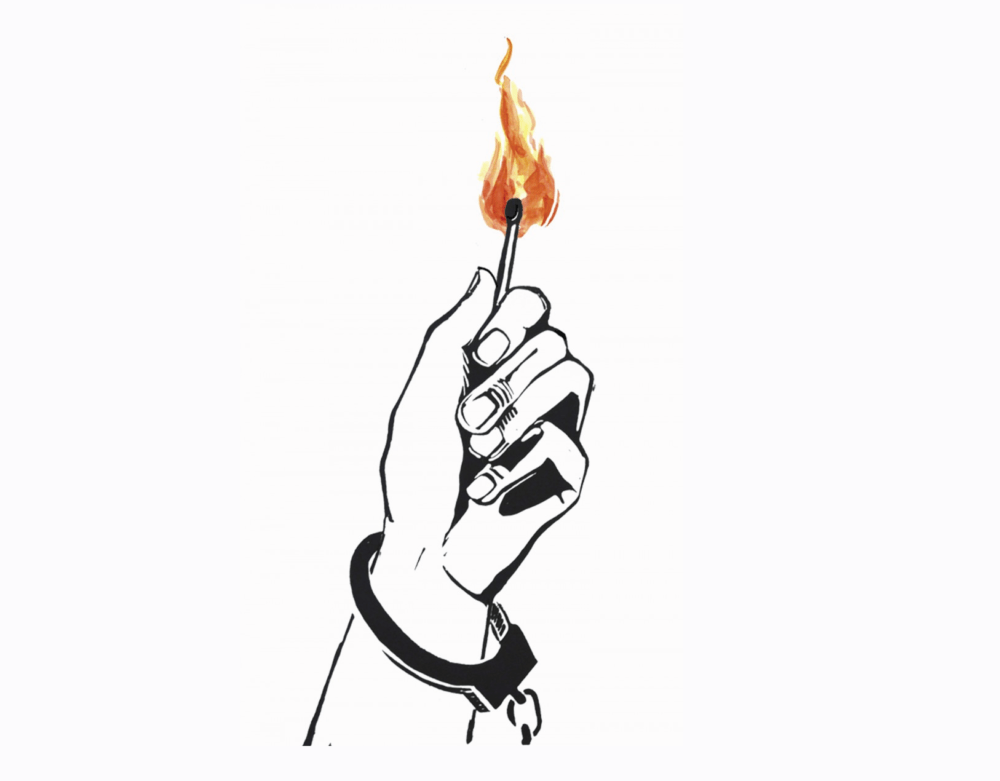Walking Away from Omelas
As the national prison strike continues, activists look to the future Incarcerated Workers Organizing Committee
Incarcerated Workers Organizing Committee o
r
d
F
a
c
t
o
r
y
There’s a short story from 1973 by the late Ursula K. Le Guin about a utopian city called Omelas. In Omelas, music winds through the streets, sweetness fills the air and the people are described as genuinely and interminably joyous. But there’s a catch: also in Omelas, a single child is kept in a basement broom closet, tortured in its confinement. The people of Omelas have come to understand that “their happiness, the beauty of their city, the tenderness of their friendships, the health of their children” and more, “depend wholly on this child’s abominable misery.” And while some see this arrangement and defiantly choose to walk away from all the splendor the city has to offer, most come to accept the terms as simply the “terrible justice of reality.” They rationalize their acceptance by dehumanizing the child, “the wretched one.”
For more than two weeks, prisoners all over the country have been demonstrating—with hunger strikes, work stoppages, boycotts, refusal of movement and more—in the hopes that the comparatively privileged Americans in a position to shape policy and petition lawmakers will forsake their own version of Omelas. The national prison strike, now winding down at the end of its third week, seeks to reverse the tacit social contract that rationalizes the brutal treatment of prisoners in the name of greater social peace.
So far, the strike has been most successful in publicizing one central demand: “An immediate end to prison slavery. All persons imprisoned in any place of detention must be paid the prevailing wage in their state or territory for their labor.” That this should even qualify as a baseline cause for the protest infuriates many criminal justice advocates; there should be no exception to the 13th Amendment’s language banning the practice of American slavery, they say.
But Brooke Terpstra, a media representative of the Incarcerated Workers Organizing Committee, an outside network that supports the protest efforts, says that to focus only on labor does a disservice to the broader movement. “This is a human rights action,” he says of the strike. “When [prisoners] speak of slavery, they speak of the whole of their existence, the whole of a non-human designation.”
The strikers have assembled an extensive list of demands, the first of which asks for policy to simply “recognize the humanity of imprisoned men and women.”
Indeed, the strikers have assembled an extensive list of demands, the first of which asks for policy to simply “recognize the humanity of imprisoned men and women.” How exactly do the protesters expect to bring about such a sweeping reversal of the logic behind the sprawling American carceral state? They give a list of concrete steps, including:
- The Prison Litigation Reform Act must be rescinded, allowing imprisoned humans a proper channel to address grievances and violations of their rights.
- The Truth in Sentencing Act and the Sentencing Reform Act must be rescinded so that imprisoned humans have a possibility of rehabilitation and parole. No human shall be sentenced to Death by Incarceration or serve any sentence without the possibility of parole.
- An immediate end to the racial overcharging, over-sentencing, and parole denials of Black and brown humans. Black humans shall no longer be denied parole because the victim of the crime was white, which is a particular problem in southern states.
- An immediate end to racist gang enhancement laws targeting Black and brown humans.
- No imprisoned human shall be denied access to rehabilitation programs at their place of detention because of their label as a violent offender.
- State prisons must be funded specifically to offer more rehabilitation services.
- Pell grants must be reinstated in all U.S. states and territories.
- The voter rights of all confined citizens serving prison sentences, pretrial detainees, and so-called ‘ex-felons’ must be counted. Representation is demanded. All voices count.
Many of the grassroots prison reform activists I’ve interviewed explain that such far-reaching reforms are but the starting point in bringing about a more humane model of incarceration. All too often, they report, they find their efforts effectively shut down by a “knee-jerk response” or “gut reaction” that more or less rules out broader empathy with the plight of prisoners on principle: one must “do the time if they do the crime,” the typical conservative refrain goes. Criminals—a term that, along with its root, crime, many prison reform advocates shun in the effort to clarify that many of the infractions that land offenders in prison, such as drug use, don’t involve any wider social harm—are commonly depicted as getting what’s coming to them (or worse, “coddled” by clueless liberal reformers). But “the situation is much more complex than a bumper sticker attitude,” Terpstra says.
Carlton Williams, an activist lawyer who advocates for prison reform, offers an instructive analogy: if a parent were to lock a child in a closet for an act of disobedience, the parent would almost universally be condemned as evil. Instead, within families, he argues, those enforcing order and obedience try to seek out ways to resolve conflict that don’t involve torturous punishment.
In a similar vein, Terpstra explains that much of the country already knows the current form of the prison system to be cruel because in many instances “it is them, it is their family, it is their class, or it is their community” that’s on the receiving end of routinely dehumanizing treatment at the hands of prison authorities.
What’s more, activists like Terpstra argue, the extreme measures of dehumanization that prevail in most American prisons don’t even succeed on their own professed terms: they fail to render the general social order any safer. An abundance of research shows that our current carceral state does not prevent or deter harm.
Still, in much the same way that the fictional inhabitants of Omelas come to accept the torture of the child in the basement, many Americans have fatalistically come to accept the cruel treatment of prisoners as a terrible but necessary accommodation to the natural order of things. And that’s the larger challenge that reformers will have to face once the present strike has run its course: marshaling sustained support from the general public for an entirely different, and more humane, model of incarceration. The strike’s ultimate success, says Amani Sawari of Jailhouse Lawyers Speak, “will not be determined in a simple, easily digestible news bite, but by the recognition by enough people with enough power to force society to view prisoners as human beings and view the concerns of incarcerated humans as legitimate human rights concerns.”



![How to recycle gadgets, clothing, and beauty empties [2025]](http://n.sinaimg.cn/news/1_img/vcg/2b0c102b/106/w1024h682/20180815/PXOB-hhtfwqr3959254.jpg)














